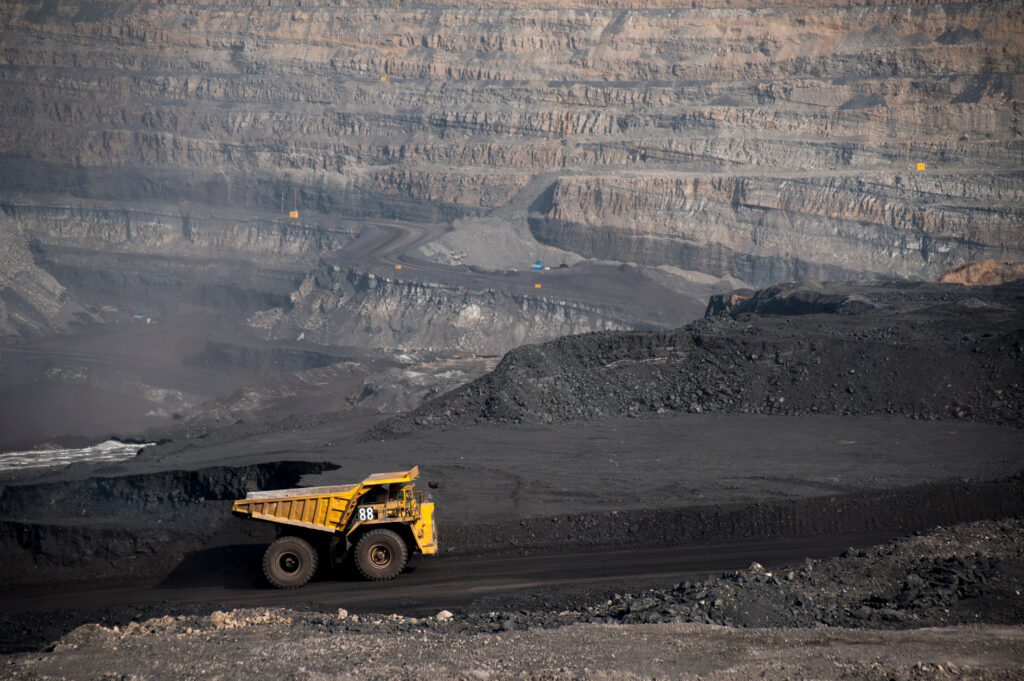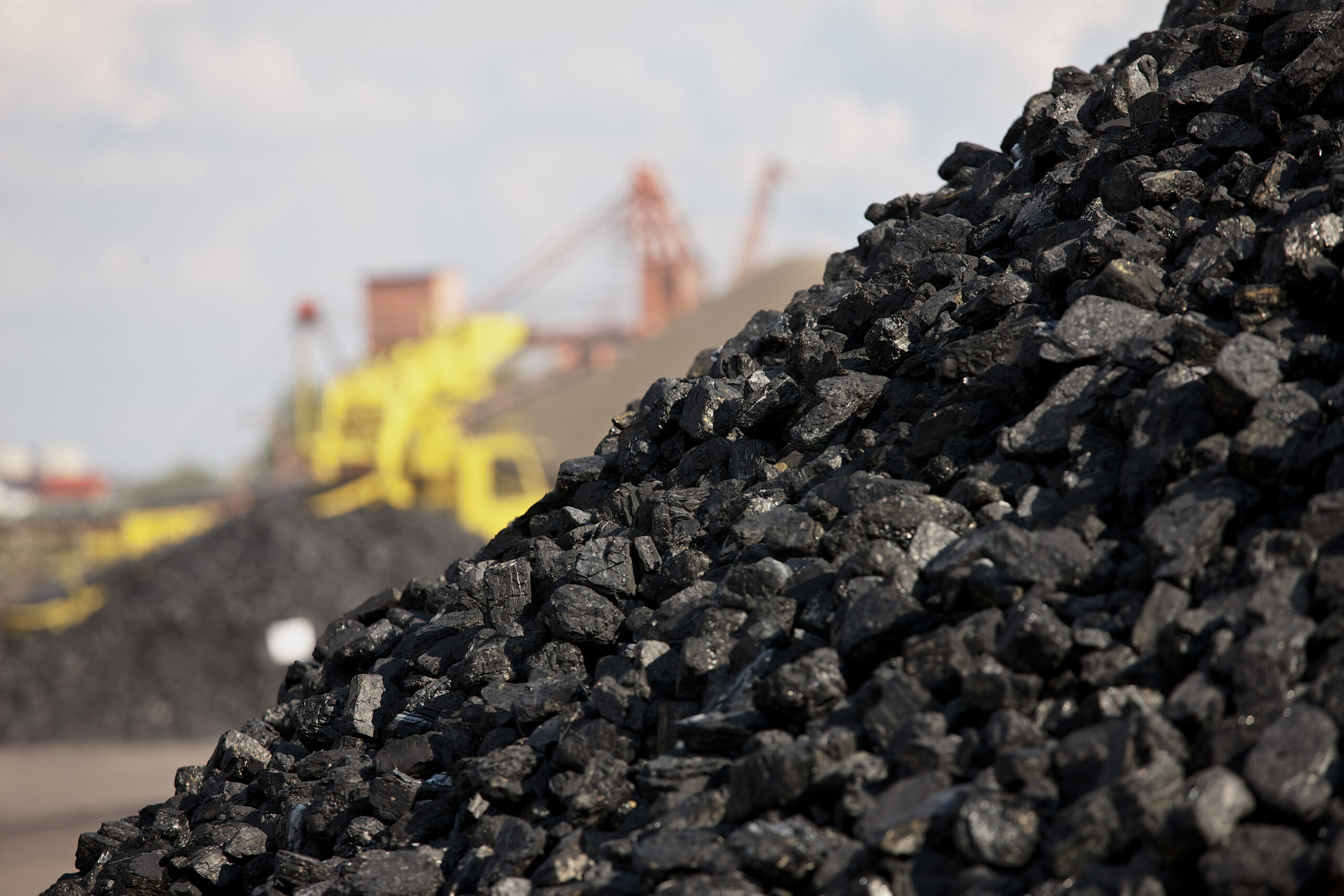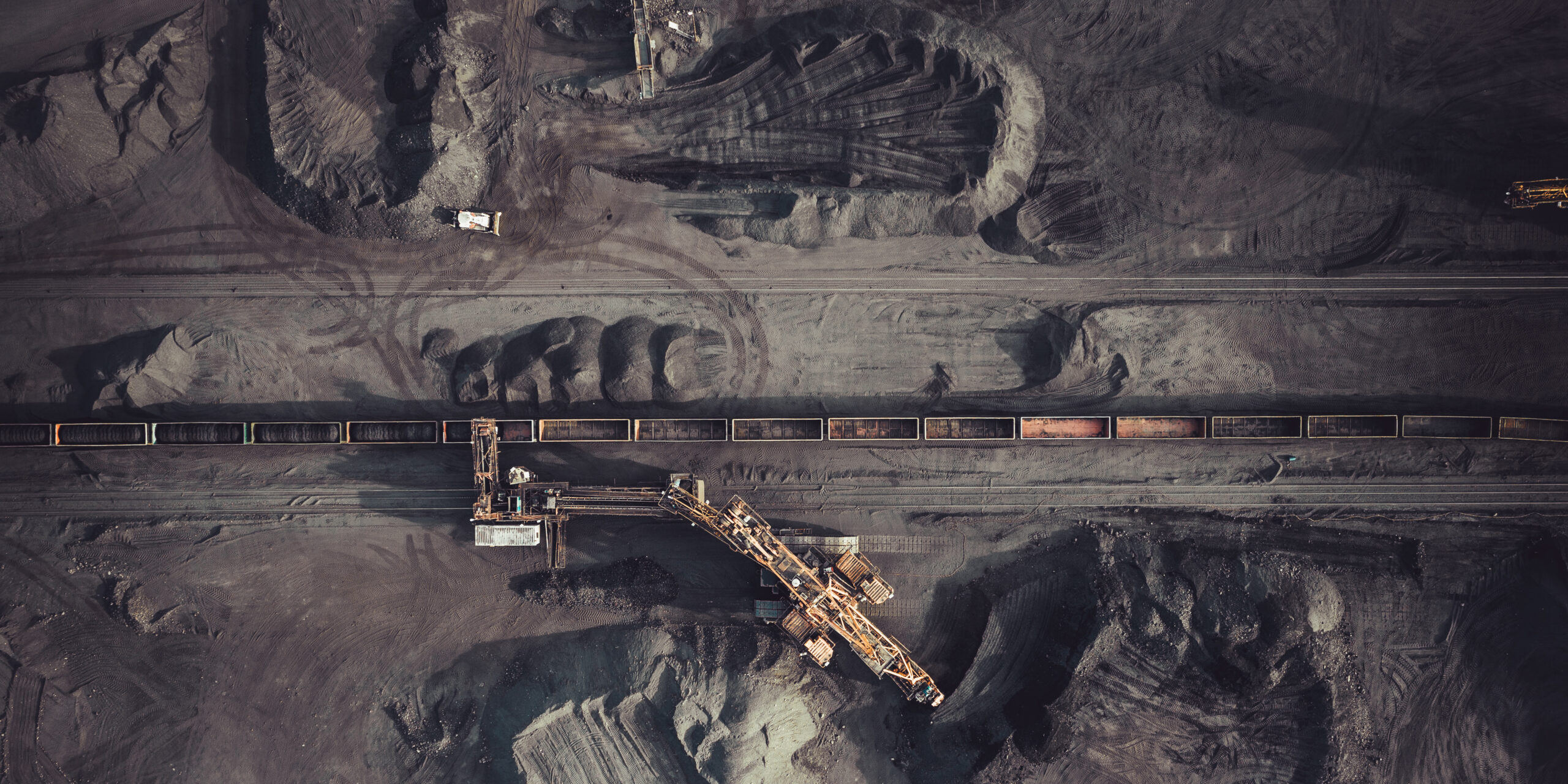
86 per cent of a river gone: First Nation calls on BC Hydro to let more water through
Katzie First Nation wants BC Hydro to let more water into the Fraser region's Alouette...
In mid-May, beleaguered coal company Coalspur Mines Ltd — the company behind the contentious Vista thermal coal mine in Alberta — received an ominous letter. The letter came from U.S. Bank, the company’s supplier of corporate credit cards. Its subject was clearly written across the top, in bold, underlined letters: “TERMINATION NOTICE.” The company’s credit cards were cancelled, effective immediately.
It was just the latest blow in a series of financial setbacks for the company that started almost the moment they began mining coal.
Setbacks for coal companies are snowballing across the country, as expanded regulatory scrutiny and political and public backlash against one of the world’s most carbon-intensive fossil fuels have increasingly become the norm.
Nevertheless, coal companies have continued to push for new approvals and expanded operations. Opaque corporate structures have meant international investors have historically been able to reap profits from Canadian coal resources, like in the case of Australia’s richest billionaire, often with little transparency.
Now, a recent court case in Alberta provides a rare glimpse into the inner financial workings behind the struggling Vista coal mine, which is nestled in the foothills of western Alberta, just 40 kilometres from Jasper National Park. The mine, combined with its proposed — and hotly debated expansion — is what a mining industry website describes as “one of the largest undeveloped coal mines in North America.”
The termination notice from U.S. Bank was among a series of court documents related to an ongoing creditor protection process involving Coalspur. The documents reveal Coalspur has been facing a financial crisis in the wake of regulatory setbacks, operating losses, a temporary shutdown, increasing investor skepticism and fallout from the sudden death of a charismatic coal magnate from West Virginia dubbed “the King of Coal.”
The revelations have Alberta experts ringing alarm bells about whether sufficient funds have been collected to clean up the mine — and whether the Alberta government has ensured other mines in the province don’t end up in a similar situation.
With Alberta’s auditor general recently once again raising red flags about the province’s system of ensuring companies pay for the cleanup of old mines, critics are increasingly worried companies that can’t make a financial go of it will leave behind a substantial price tag for taxpayers.
Drew Yewchuk, a staff lawyer with the Public Interest Law Clinic at the University of Calgary, isn’t satisfied the province has the safeguards in place to prevent companies operating on slim margins from leaving behind large cleanup bills — and if the demand for fossils fuels declines in future years, he’s predicting a “huge catastrophe.”

The Vista thermal coal mine describes itself in court documents as “one of the most significant employers in the Hinton and Edson regions of Alberta,” has a mining footprint of nearly 1,500 hectares and the capacity to produce roughly 6.5 million tonnes of thermal coal — coal burned for electricity — annually for export to Japan, South Korea and Taiwan. The mine employs nearly 300 workers and it was first opened in 2019.
The Vista mine was something of a passion project of American billionaire Chris Cline, described in court documents as “a colourful, driven and highly successful coal mining entrepreneur.” Cline had humble roots as a son of a long line of coal miners in West Virginia, a state in which he maintained a mansion, complete with an artificial lake for water-skiing, a go-kart course and a fireplace over which he hung his old well-worn hard hat from his teenage days spent working in an underground coal mine.
He also owned two side-by-side oceanfront mansions in Palm Beach, Florida, and a 277-acre private archipelago in the Bahamas. In short, he had become incredibly wealthy from his coal deals.
He had also used his wealth for political influence, as one of the top donors to former U.S. President’s Donald Trump’s inauguration committee and as a prolific supporter of the Republican party, according to Open Secrets, a transparency database from the Center for Responsive Politics.
Another industry executive described Cline as “famous in the [coal] industry for his ability to meet ambitious targets, including targets that many thought were unachievable,” according to court documents.
His bullish business strategy attracted him to the eastern slopes of the Canadian Rockies, where along with his trust company, he had used the proceeds from a billion-dollar coal company sale in the U.S. to fund the acquisition of the Vista Mine.

But then tragedy struck two years ago following Cline’s sudden death, at the age of 60, in a helicopter accident off the coast of his private island in the Bahamas, en route to Fort Lauderdale. Six others were killed in the accident, including Cline’s daughter, Kameron, some of her friends, and two pilots. Following the crash, Cline’s trust company limited its investment in Coalspur, leaving the mining company “unable to secure meaningful financing” for the mine, according to court documents.
Prior to 2019, Cline and his trust company were the “most significant source of funding” for Coalspur. (Representatives of the Cline Group and the Cline Trust Company did not respond to The Narwhal’s request for comment.)
The company’s troubles continued from there, according to court documents, which provide rare insight into the struggling coal industry — one in which scrutiny from regulators and investors is increasingly making business more difficult.
In the case of Coalspur, which had been making headlines for its cantankerous relationship with the federal government over a requirement that its planned expansion undergo an environmental review, the company’s financial situation has become increasingly dire in recent months.
In court documents filed in April, the head of the parent company overseeing all coal mining at Vista acknowledged “Coalspur is currently insolvent and urgently requires protection” under the Companies’ Creditors Arrangement Act.
The company said in court documents on June 16 it had “canvassed the willingness” of another bank to provide replacement corporate credit cards so it could continue business. RBC, a company recently in the news after a report found it continues to be a major funder of the fossil fuel industry, agreed to supply the company with new credit cards. (U.S. Bank did not respond to The Narwhal’s request for an interview; an RBC spokesperson did not agree to an interview and said by email that “RBC does not comment on its banking relationships, even to confirm or deny details of a relationship.” When asked about whether it has a plan to reduce financing to carbon-intensive industries like thermal coal, RBC sent The Narwhal links to some of its policies, including a policy on “sensitive sectors” which states “RBC will not provide financing to new clients that operate significant thermal coal mining” and will “support [existing thermal coal clients] in their transition to lower carbon emissions.” RBC did not provide a response to a question from The Narwhal about how it reconciles these policy objectives with the offer, as described in the court documents, to extend new corporate credit cards to Coalspur.)

Coalspur’s corporate credit cards were cancelled in the wake of the company’s financial woes. In his affidavit dated April 19, the CEO of Vista Energy Holdings (Coalspur’s parent corporation), Michael Beyer of Palm Beach Gardens, Florida, stated the insolvency was a result of an “acute liquidity shortage facing the company.” As a result, the company claimed it “urgently requires the protection of the [Companies’ Creditors Arrangement Act].”
Protection under the Act prevents anyone from collecting debts owed for a set period of time so companies can restructure and seek compromises with creditors.
Anna Lund, an assistant professor of law at the University of Alberta who specializes in bankruptcy and insolvency, explained that protection under the Companies’ Creditors Arrangement Act usually results in one of two things: reorganization of the company or liquidation of assets.
“I’d be very surprised if somebody is using the [Companies’ Creditors Arrangement Act ] just as time to find financing,” she said. “They may be using it as a chance to recruit a capital investment from somewhere and using the [Companies’ Creditors Arrangement Act] to restructure the company in some way.”
Either way, applying for protection, she said, damages relationships with creditors and “is a pretty serious step to take as a company.”
According to court documents, a combination of circumstances “devastated” Coalspur’s ability to generate revenue.
Clark Williams-Derry, an energy finance analyst at the Institute for Energy Economics and Financial Analysis, characterizes Coalspur’s financial troubles as “a case of both operational incompetence and financial incompetence at the same time.”
“If you’ve got a sturdy ship, one wave is not going to capsize you,” he added. “If you’ve got a poorly designed boat and nothing to bail yourself out, one wave can sink you.”
“A case of both operational incompetence and financial incompetence at the same time.”
Clark Williams-Derry, energy finance analyst
The cause of the company’s trouble was two-pronged, according to Beyer’s affidavit, and began in late 2020 when coal prices rose globally.
Rising coal prices triggered the “crystallization” of a massive hedge obligation which required the company to pay more than US$72 million to a global commodity trading company, Trafigura. The company had entered into a contract that required it to pay large sums if coal prices exceeded an agreed-upon threshold. As a result of the debt, Trafigura took control of all of Coalspur’s coal inventory and sold it.

The situation was the result of rapidly escalating thermal coal prices in late 2020, described by Beyer as an “unprecedented escalation” in the form of a nearly 60 per cent increase in four months.
Williams-Derry says there’s “something wrong there” when it comes to Coalspur’s explanation for its financial woes.
“This is a super-volatile commodity,” he said of thermal coal exports. “Repeatedly over the last decade you have seen price spikes of this magnitude — this was perhaps unexpected, but it’s not that out of the ordinary,” he added, noting a rapid increase in coal prices “doesn’t happen every day, but it happens every five years.”
“That is something you have to build into your business model,” he said, pointing to recent similar spikes in coal prices in 2016 and 2010.
“What happened was super weird,” Williams-Derry told The Narwhal of Coalspur’s financial crunch. “When the price of coal rose, that was a terrible financial problem for Coalspur.”
“If your company falls apart because of good news, you’ve done something wrong,” he added, deeming it “mismanagement.”
At the same time as it faced tens of millions in hedge obligations, the mine was also forced to close due to what it characterized as “permitting issues” as the company sought to expand its tailings facilities. The closure, in February, resulted in the lay off of 274 mine employees for approximately three months. The mine restarted operations in May, according to the Alberta Energy Regulator.
Coalspur had reached the capacity of its tailings pond and sought approval of an expansion in the form of eight tailings cells with a volume of nearly 30 billion litres. (Just two of the additional tailings cells were ultimately approved by the Alberta Energy Regulator, due to environmental concerns.)
Williams-Derry has concerns about Coalspur’s characterization of a “permitting issue” that contributed to its financial woes.
“Basically, they built a mining project and then quickly discovered that it had operational flaws and design flaws that were pretty fundamental,” he said. “It’s not just ‘oh, we forgot to get a permit.’ ”
“They built a project that couldn’t handle the actual operations of the mine,” he added, calling it “fundamentally flawed.”
The Narwhal attempted to reach Coalspur through numbers associated with its parent company’s CEO, Michael Beyer, as well as through email addresses once attributed to staff members at its wholly owned subsidiary, Bighorn Mining Ltd. All attempts to contact Coalspur were unsuccessful. Beyer’s attorney told The Narwhal by email that he would pass along The Narwhal’s request for an interview. The monitor overseeing Coalspur’s insolvency proceedings told The Narwhal by email that as a court officer it is not able to provide any comments on the proceeding, nor to provide any contacts at the company.
Cline’s death had hobbled the company from the start, according to documents.
In the affidavit, Beyer noted that Coalspur had pursued numerous sources of financing following the restriction on financing from Cline’s trust company, but was unsuccessful in part due to “the general reticence within the financial industry to fund thermal coal development projects due to environmental, social and governance concerns.”
Nevertheless, Coalspur began operations at the Vista mine in 2019 and had, as Williams-Derry put it, a “terrible year one.”
According to audited financial statements submitted to the court, the company brought in $112 million in coal sales in 2019. At the same time, the company accrued $220 million in costs, leading to an operating loss of more than $107 million.
The company fared better in 2020, more than tripling its revenue from coal sales, (but still faced an operating loss), according to its unaudited financial statements. The company has so far invested some $700 million into the project and has debts to many creditors, including owing the Cline Trust Company nearly $375 million.

Coalspur has had financial woes almost since its inception, according to documents submitted to the court.
In its financial statements from its first year of operation, Coalspur noted that at the end of 2019, “substantial doubt exists about [Coalspur’s] ability to pay its current obligations as they come due.” The auditors, Ernst and Young, noted “the company has concluded that substantial doubt exists about the Company’s ability to continue as a going concern.”
Concerns about the future of the company linger, with the company noting in an application for an extension of its creditor protection until late July that the extra time was necessary as it “now seeks to include more expansive restructuring provisions … that may become necessary” including, among other options, shutting down or downsizing the mine and laying off employees.
Coalspur’s financial troubles raise concerns for experts about the company’s ability to one day clean up the mine.
According to the affidavit of Coalspur’s parent company’s CEO, the estimates of the cost to reclaim the mine at the end of its life, known as asset retirement obligations, are $6.6 million.
“That doesn’t fit offhand with my understanding of what those costs should be so I’m a little suspicious,” Yewchuk, the staff lawyer with the Public Interest Law Clinic at the University of Calgary, told The Narwhal. “I can’t even imagine what they’re doing up there that they would be able to keep reclamation costs that low.”
“Coal companies generally underestimate their liabilities by a significant percentage,” he said. “Every coal mine in Alberta presents this kind of problem.”
According to Tonya Zelinsky, a spokesperson for the Alberta Energy Regulator, the regulator is holding $7 million to cover cleanup costs for the mine.
“If there are reclamation costs over and above that security, then [the court] is into a difficult situation,” Lund, the insolvency lawyer, told The Narwhal, noting a court has decide if those costs will be caught as part of the insolvency process and who, if anyone, the province can pursue for any additional reclamation costs.
“If this ends up being a liquidating [case] and the company is essentially wound down, then there’s nothing — there’s no entity, there’s no assets — for the regulator to go after later,” she added.

The regulator bases the security it collects using a formula as part of its Mine Financial Security Program. “Security collected for Alberta’s coal mines is based on a company’s assets and liabilities, which is calculated under the [regulator’s] Mine Financial Security Program,” Zelinsky wrote in an email to The Narwhal.
“Each approval holder’s [Mine Financial Security Program] liability is considered confidential therefore the [regulator] is unable to provide an estimate of Vista’s liability,” she added.
Yewchuk has substantial concerns with the regulator’s approach. “The mine financial security program just leaves really, really huge gaps between cleanup costs and collected security,” he said. “The mine financial security program needs to be completely replaced.”
Yewchuk is not the first to point to concerns about the program. A report from Alberta’s auditor general concluded in 2015 that if “a mine operator cannot fulfill its reclamation obligations… the province may have to pay a potentially substantial cost for this work to be completed.”
Yewchuk fears that’s exactly what will happen.
“[The program] doesn’t take into account the possibility of resource prices just nose-diving and not coming back up,” Yewchuk said.
“We’re looking at that possibility coming up in the next one or two decades,” he said of coal, oil and gas prices. “None of our security systems are built for it.”
“It’s going to be a huge catastrophe.”
The issuing of permits for Vista’s expanded tailings facilities were delayed at the Alberta Energy Regulator in part due to the submission of statements of concerns by two local Indigenous groups, Gunn Metis Local #55 and the Louis Bull Tribe.
In its statement of concern, the Louis Bull Tribe noted that the expanded tailings would “have a direct and adverse impact on Louis Bull Tribe’s ability to practice constitutionally protected Aboriginal and Treaty rights.”
“Coalspur did not notify or engage with the Tribe about the Applications,” the Tribe added.
Gunn Metis Local #55 noted concerns about the tailings expansion related to reclamation, water quality, air quality and the safety of traditional land users and “Coalspur’s failure to engage” with local Indigenous groups.
By March, both groups had withdrawn their statements of concern. Neither Gunn Metis Local #55 nor the Louis Bull Tribe responded to The Narwhal’s request for an interview by publication time.
In a further setback to Coalspur’s plans, it appears its proposed expansion is no longer a viable possibility.
In a statement released as world leaders converged on the United Kingdom for the first in-person G7 summit since the start of the pandemic, federal Environment Minister Jonathan Wilkinson announced his government believes thermal coal projects are “likely to cause unacceptable environmental effects within federal jurisdiction and are not aligned with Canada’s domestic and international climate change commitments.”
“New thermal coal mining projects or expansions are not in line with the ambition Canadians want to see on climate, or with Canada’s domestic and international climate commitments,” Wilkinson said in the statement.
Just last month, Coalspur was in court fighting the federal government’s requirement that its expansion plans undergo an environmental review.
Coalspur’s expansion was explicitly named in the announcement, noting “Minister Wilkinson informed Coalspur Mines Ltd. that the policy announced today applies to the consideration of its proposed thermal coal mine expansions at the Vista Coal Mine near Hinton, Alberta.”
The proposed expansion would have increased output by an average additional 4.2 million tonnes of coal each year for a decade.
Coalspur can still move forward with its application, but as Wilkinson told The Globe earlier this month, “we’ve told them at the front end that it will cause unacceptable — and that’s a pretty strong word — environmental impacts.”
Get the inside scoop on The Narwhal’s environment and climate reporting by signing up for our free newsletter. On a warm September evening nearly 15...
Continue reading
Katzie First Nation wants BC Hydro to let more water into the Fraser region's Alouette...

Premier David Eby says new legislation won’t degrade environmental protections or Indigenous Rights. Critics warn...

Between a fresh take on engagement and our new life on video, our team is...
